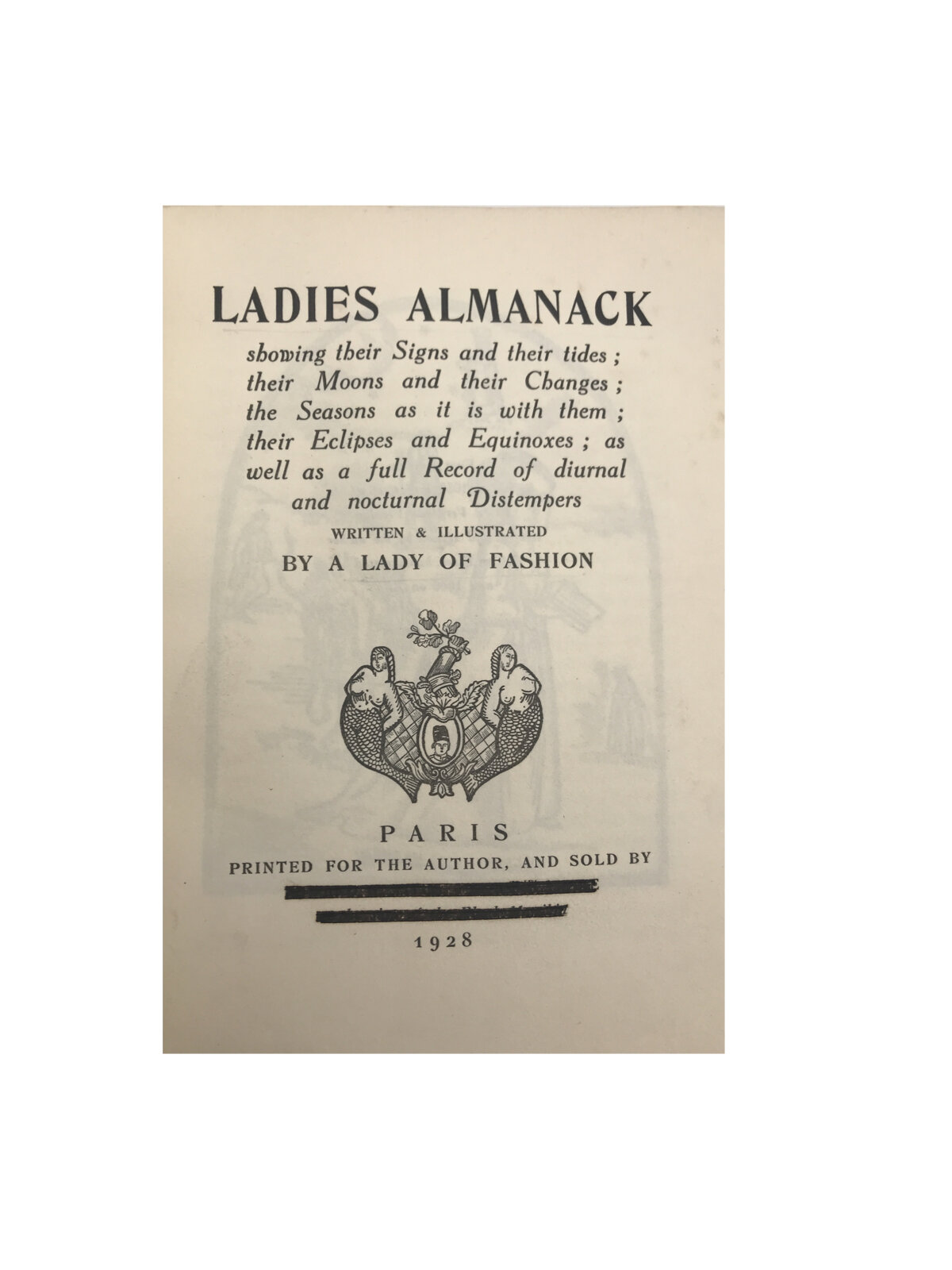Ladies Almanack by Djuna Barnes




Ladies Almanack by Djuna Barnes
Structured as an a monthly almanac, Barnes’s Ladies Almanack affectionately explores lesbian society with a bawdy and satirical tale in twelve parts, in ecstasy of the condition of women and the love between them.
Barnes herself is critically accepted as one of the great modernist writers, and was a contemporary, friend and sometime enemy of Joyce, Eliot, Pound, and Cocteau. Forced into marriage with a male family friend after sexual assault, she escaped to Paris via New York, becoming a significant influence on the Bohemia scene until the outbreak of the second world war. She lapsed into relative obscurity until her death in 1982.
Barnes entered Paris with a letter of introduction to James Joyce who she soon after interviewed for Vanity Fair, and the two became fast friends. Differing on the best subjects in literature, Joyce all the same heavily influenced Barnes’s writing style, which developed from the Decadent prose of The Book of Repulsive Women to modernist experimentation found in the Almanack.
Ladies Almanack was initially privately printed in a run of 1050 and sold on street corners throughout Paris by Djuna Barnes and her friends. Barnes managed to smuggle a few copies into the United States, though bookseller Edward Titus, who offered to help in exchange for public praise and later royalties off the entire print run, which she declined, and later named the abusive patriarch character in The Antiphon (1958) after him.
Small Quarto Privately printed for the author by Imprimerie Darantiere, 1928, no 118 of 1,500 copies. Seller on title-page has been redacted to avoid prosecution for illegal material.
Quarter bound vermilion morocco over orange marbled paper covered boards, publisher's original paper wraps bound in thus preserved. Title to spine in gilt. Spine worked and splitting to top front edge, morocco a little scratched. Fore and bottom edge uncut, light spotting to top edge. First published in paper and glassine, the contemporary binding has preserved both wrappers and pages and is bright and clean throughout, Barnes' woodcuts sharp as new. Frontispiece and ornamental to title, each chapter begins with a half page woodcut printed in, designed by Barnes, and extras, in total 21 illustrations to text throughout.










